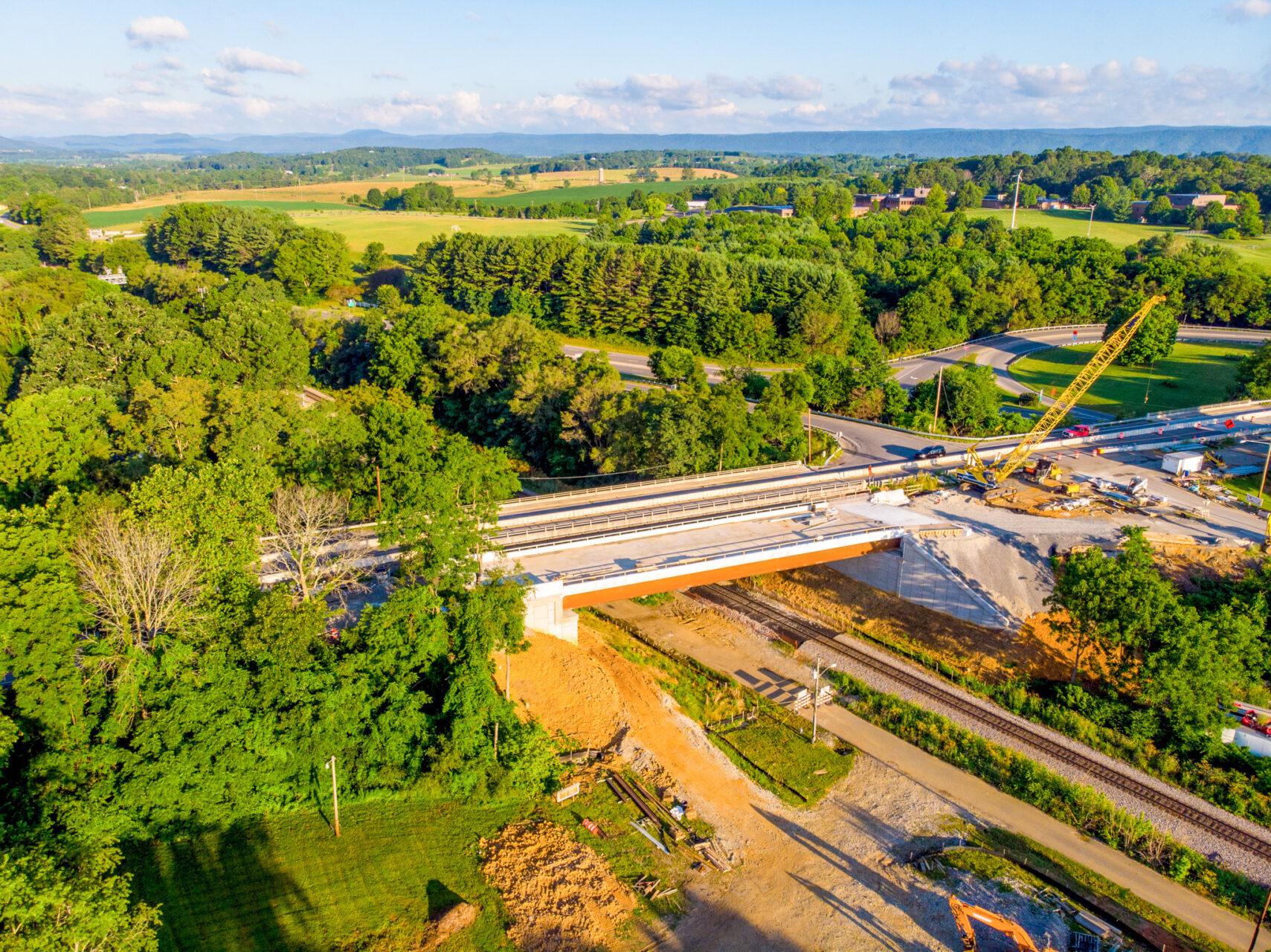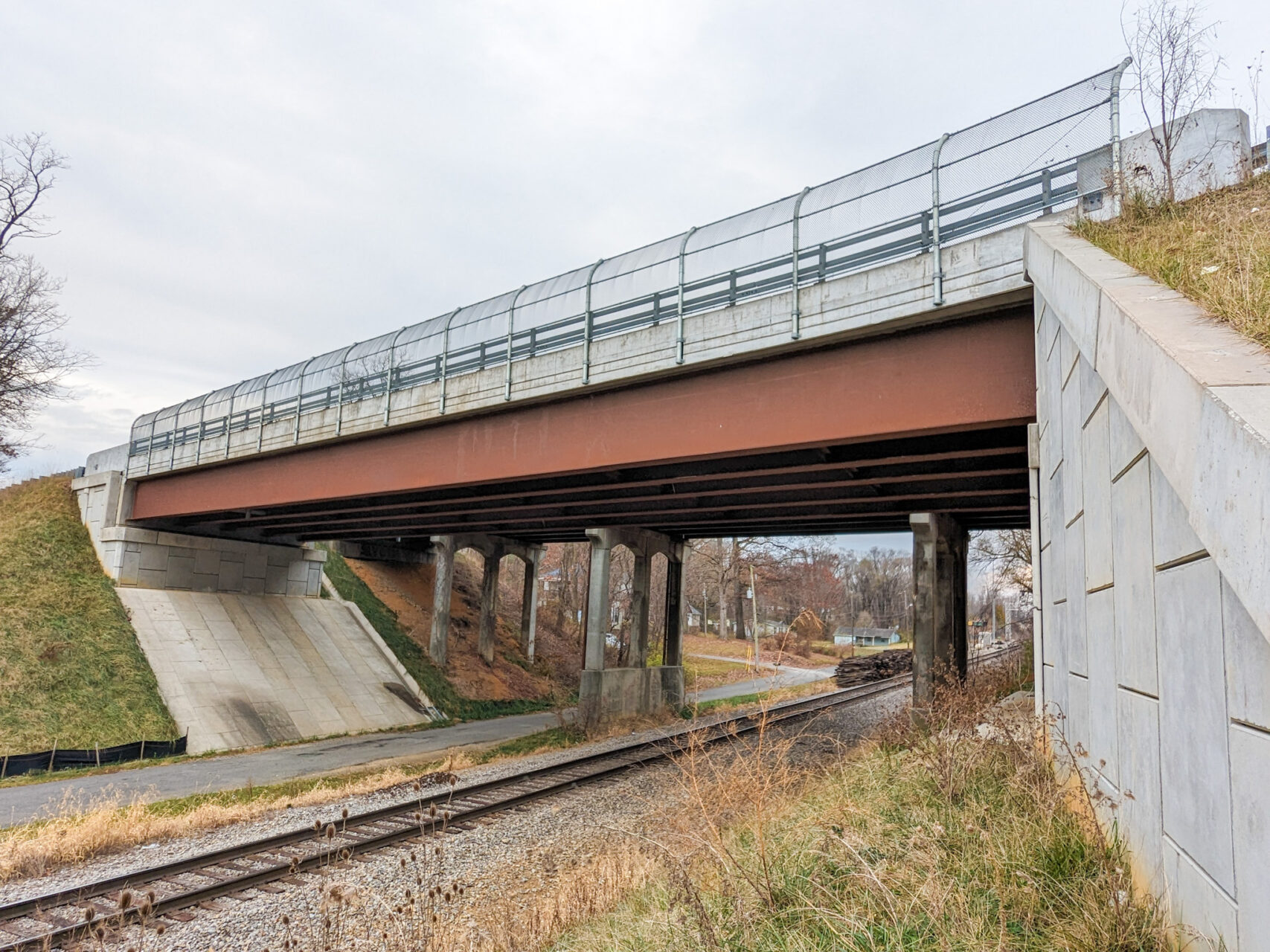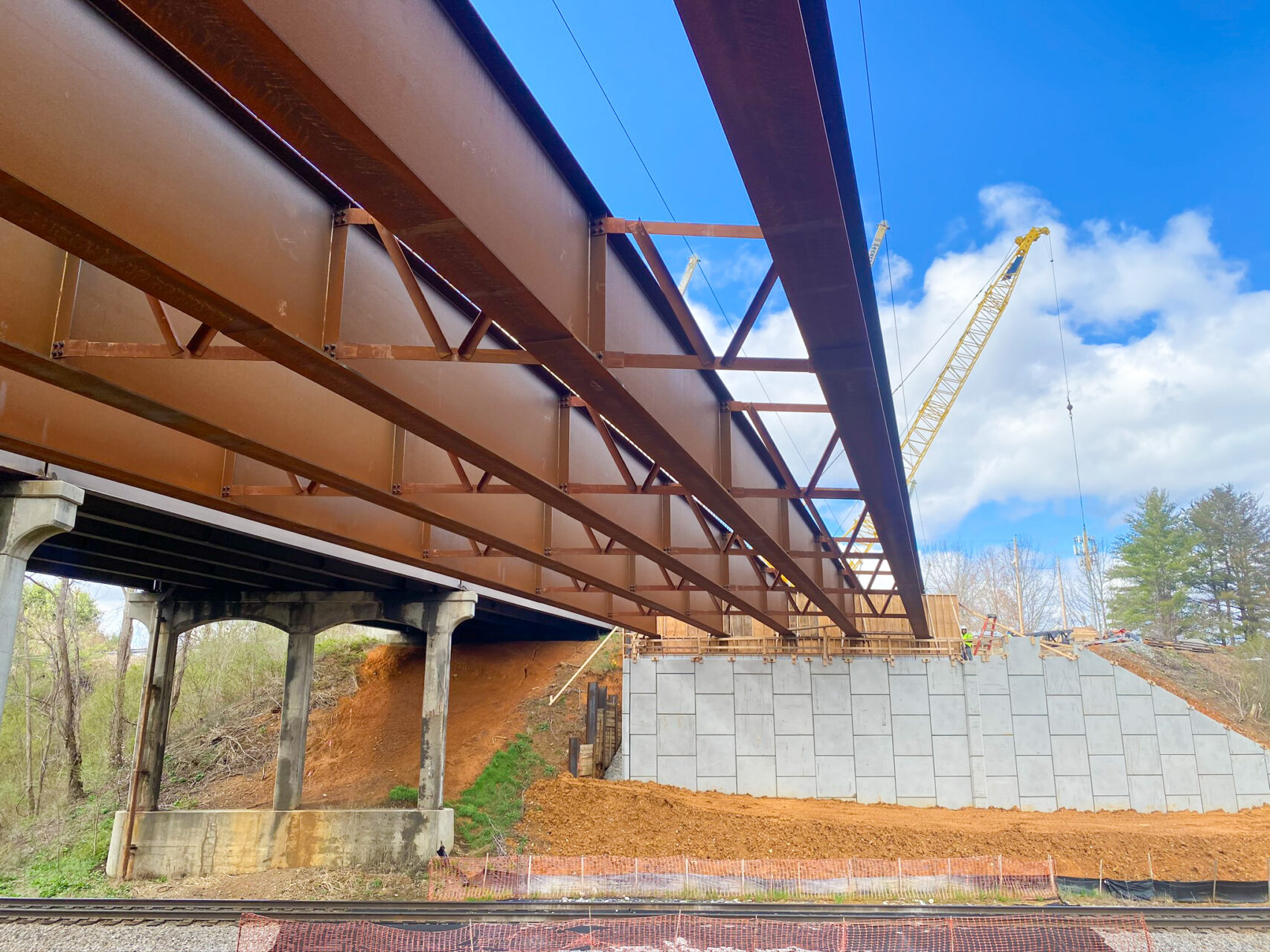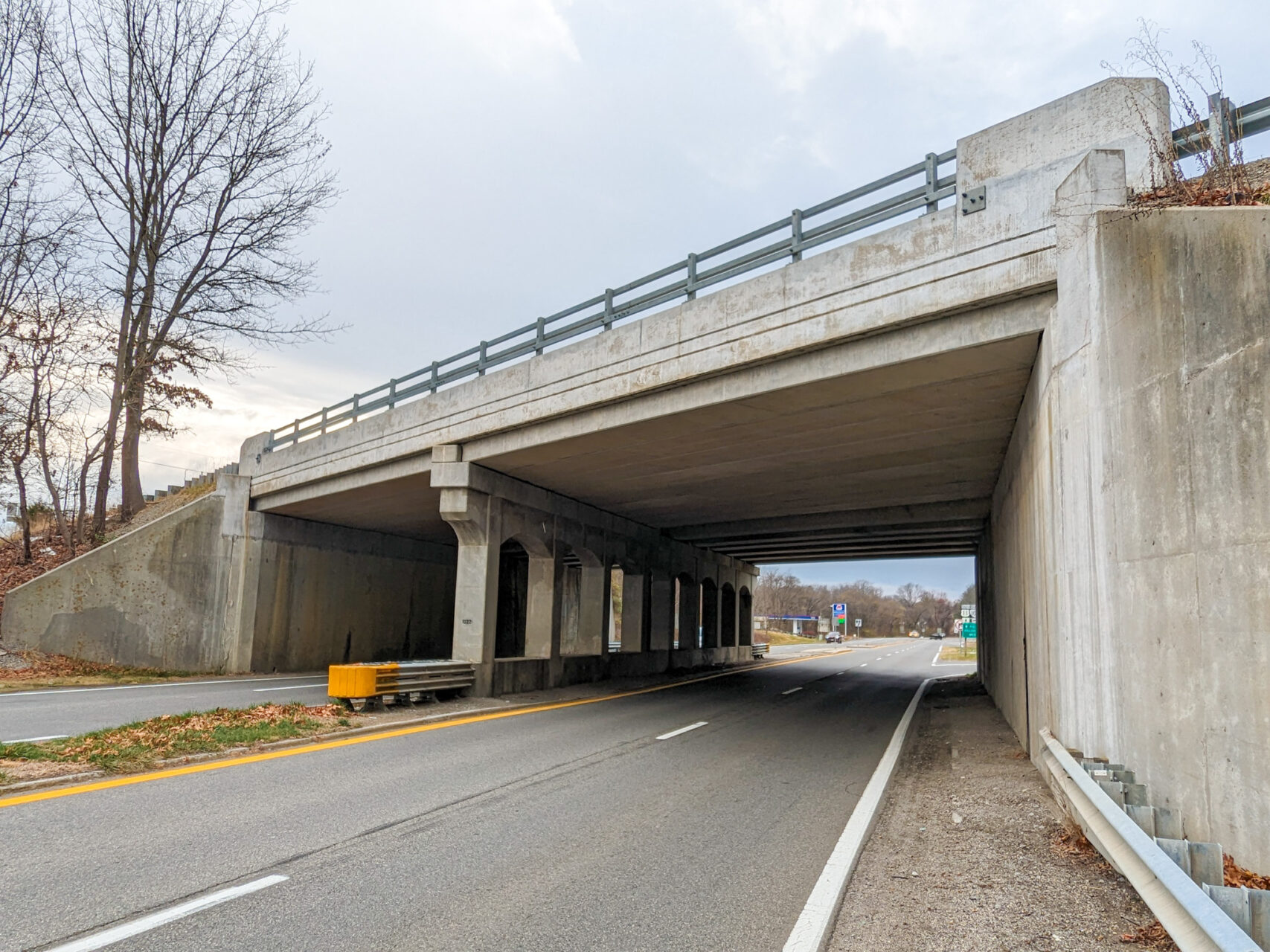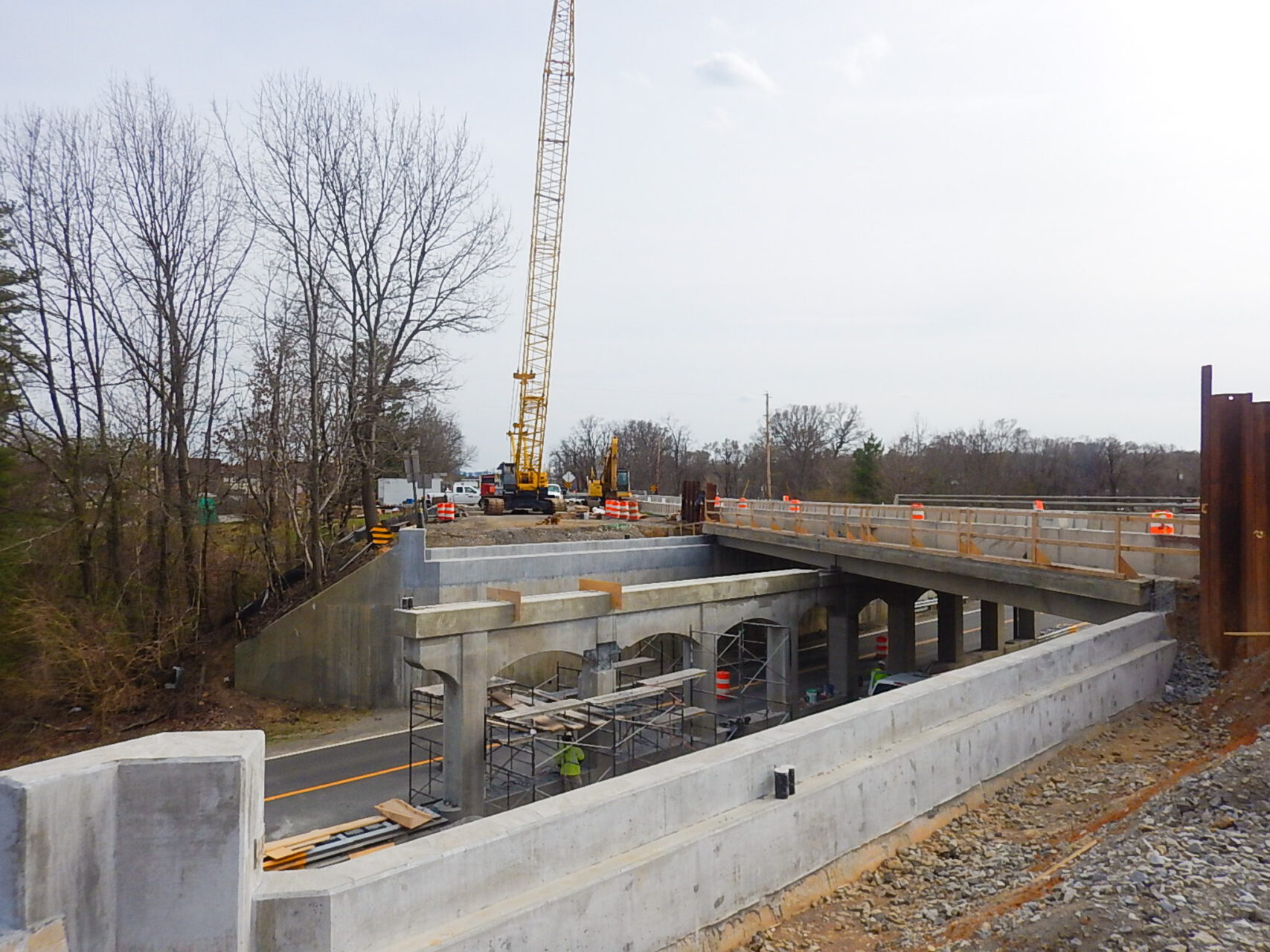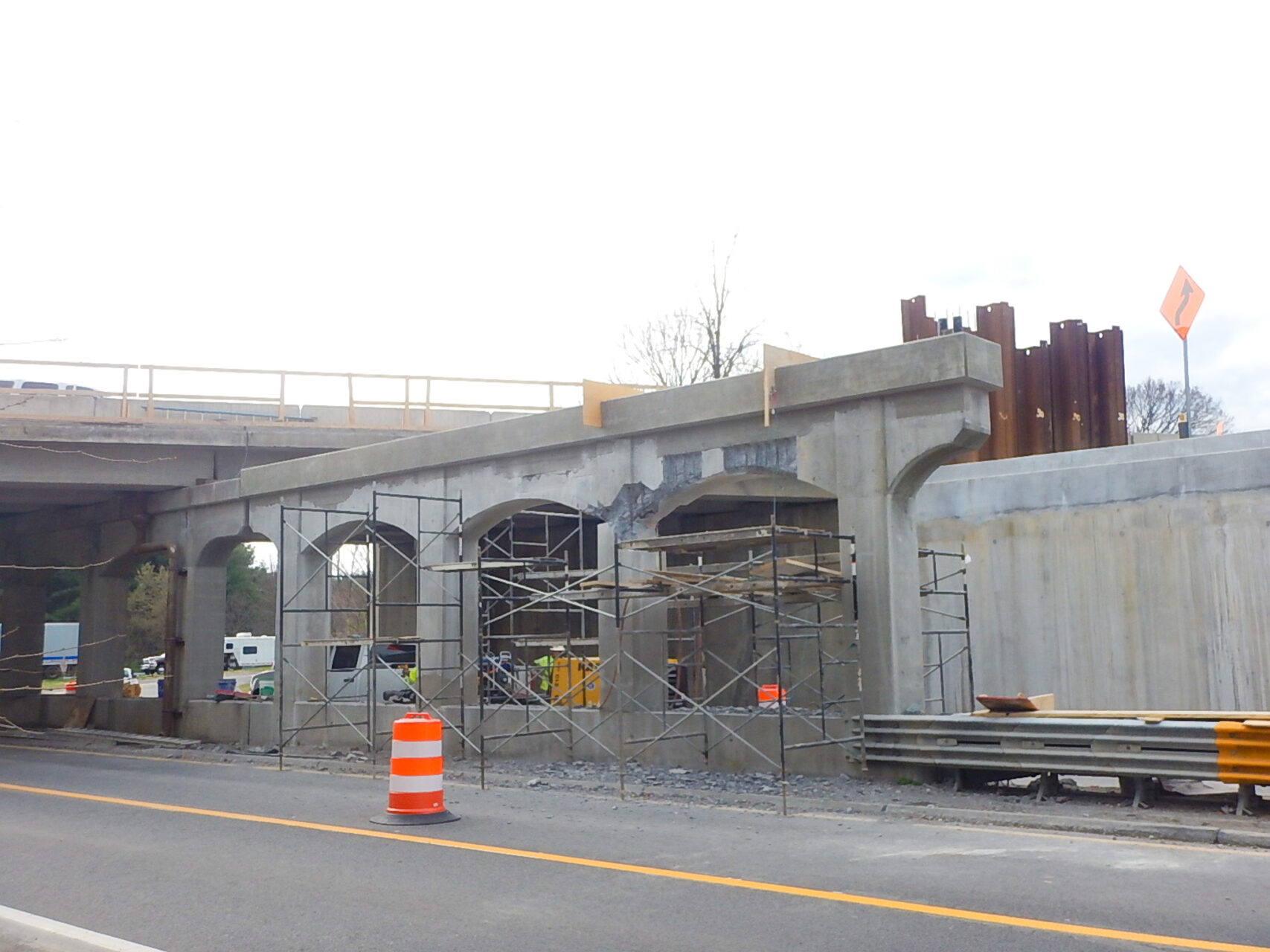Clark Nexsen was the prime consultant and lead designer on the replacement and rehabilitation of two structures located on Route 100 in Dublin, Virginia. Responsibilities included roadway design, bridge structural design, and traffic engineering design, as well as management of subconsultants performing geotechnical investigation and hydraulic design, including stormwater management (SWM) analysis.
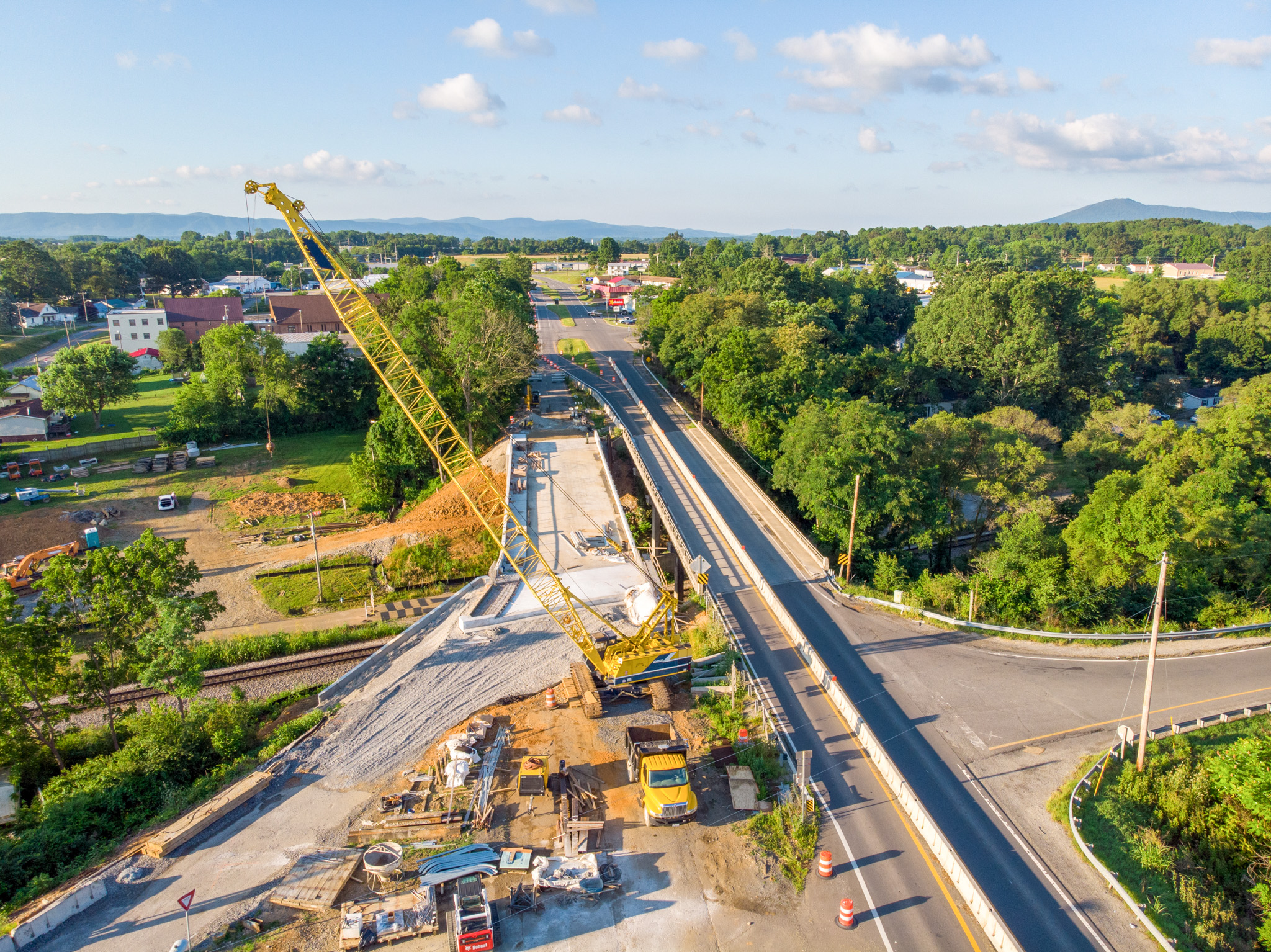 Design.
Design.
Route 100 (NBL) Bridge Replacement over N&S Railroad and Peppers Ferry Road: Six different superstructure alternatives for the replacement of the existing 200’ long, four span prestressed concrete bridge were considered. Superstructure alternatives ranged from single span to three span multi-girder bridges, while substructure alternatives ranged from a conventional abutment with integral backwall to integral abutment with MSE walls. Based on life cycle cost and constructability analyses, a 150’ long, single span scheme consisting of a steel multi-girder superstructure with integral abutments and MSE walls was selected. The shorter span length allowed the bridge to remain on a tangent to the proposed curved roadway alignment with only one corner of the deck flared to accommodate the curve, which permitted a simplified framing plan utilizing straight girders and thus reduced cost and required construction time.
Route 100 (NBL) Bridge Replacement/Rehabilitation over Route 11: In order to determine the most economical alternative, Clark Nexsen performed a rehabilitation/ replacement study on these twin overpass structures, each 95’ long supported on cantilever concrete abutments and a frame pier. Based upon life cycle cost and constructability analyses, a two-span scheme consisting of a superstructure replacement in combination with rehabilitating the existing pier and abutments was recommended. This maximized the value of the limited maintenance funding available, while remaining within the allowable budget. The replacement superstructure consists of prestressed voided slabs composite with a 7.5” thick concrete topping.
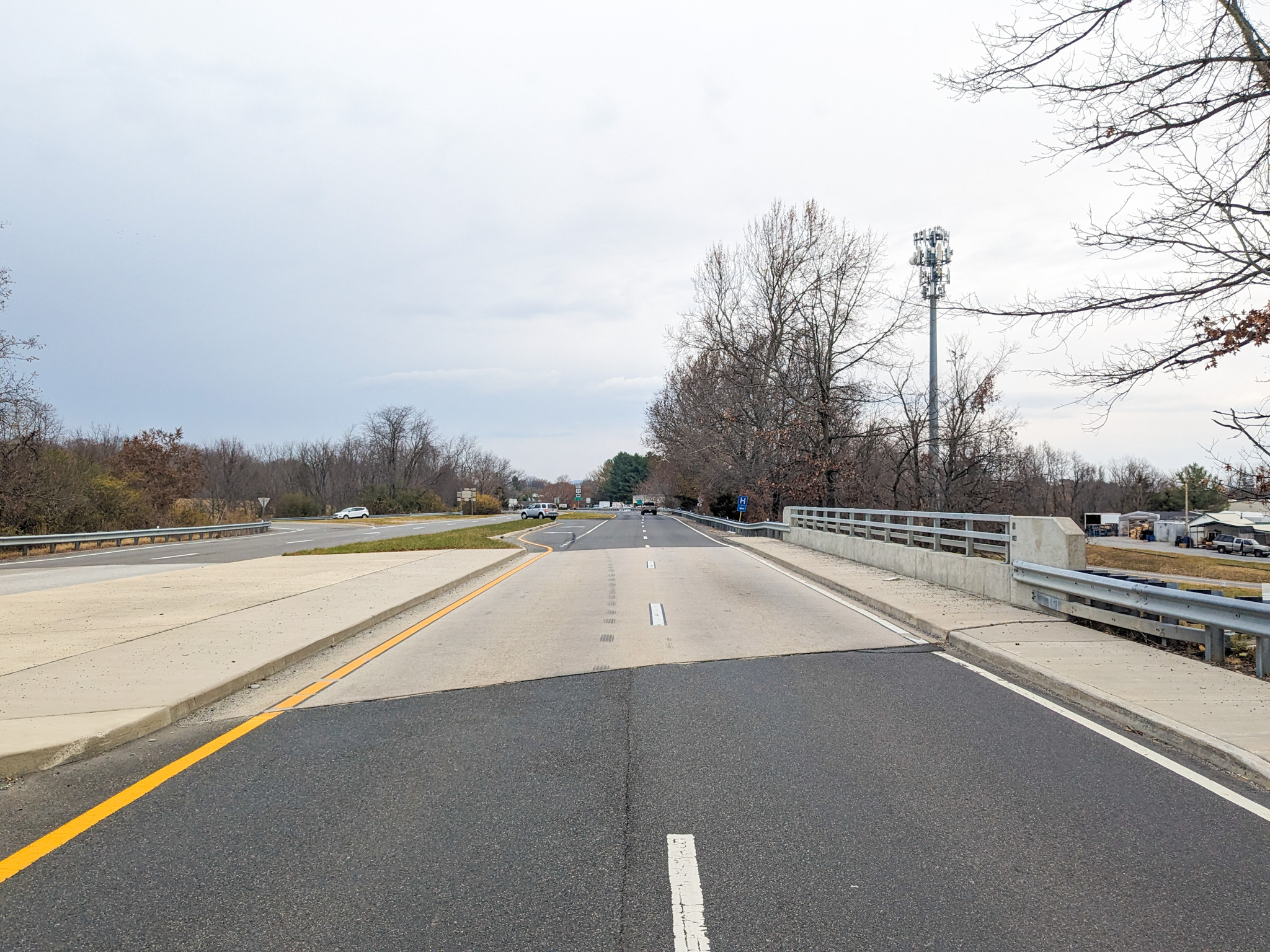 Constructability and Maintenance of Traffic Considerations. One concern regarding the constructability of the Route 100 over Route 11 bridge involved the close proximity of the adjacent southbound structure, and the need to preserve the structural integrity of the adjacent bridge as well as the existing substructure units throughout demolition and construction. An evaluation of the existing substructure was performed to determine its capacity with respect to the proposed superstructure and loading. Although the adjacent structure would remain open to traffic throughout construction, two staged construction for the NBL superstructure replacement was implemented to maintain one lane of traffic in each direction as well as access to NBL Route 11 ramp, while eliminating the need for a detour.
Constructability and Maintenance of Traffic Considerations. One concern regarding the constructability of the Route 100 over Route 11 bridge involved the close proximity of the adjacent southbound structure, and the need to preserve the structural integrity of the adjacent bridge as well as the existing substructure units throughout demolition and construction. An evaluation of the existing substructure was performed to determine its capacity with respect to the proposed superstructure and loading. Although the adjacent structure would remain open to traffic throughout construction, two staged construction for the NBL superstructure replacement was implemented to maintain one lane of traffic in each direction as well as access to NBL Route 11 ramp, while eliminating the need for a detour.
Challenges Overcome. One challenging aspect of the Route 100 over N&S Railroad and Peppers Ferry Road bridge replacement involved the feasibility of the 35’ high MSE wall at the abutments, which required close coordination with geotechnical subconsultants to perform a slope stability analysis and select an appropriate backfill material to meet bearing capacity requirements. The existing soft soils at the proposed abutment location required us to minimize the weight of the MSE walls to reduce bearing pressure; thus, lightweight aggregate, locally sourced and less expensive, was selected as a backfill material.
